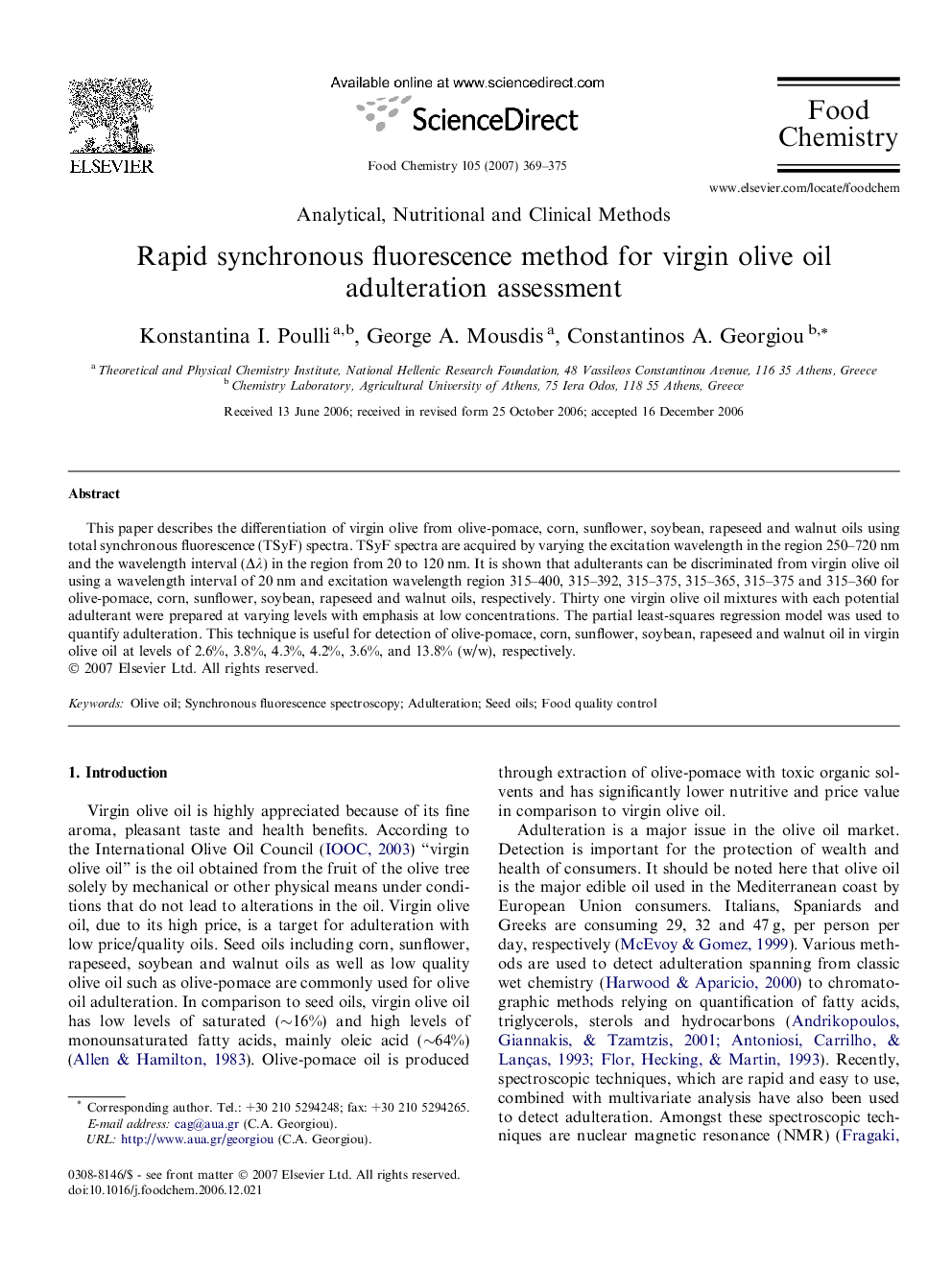| Article ID | Journal | Published Year | Pages | File Type |
|---|---|---|---|---|
| 1190273 | Food Chemistry | 2007 | 7 Pages |
This paper describes the differentiation of virgin olive from olive-pomace, corn, sunflower, soybean, rapeseed and walnut oils using total synchronous fluorescence (TSyF) spectra. TSyF spectra are acquired by varying the excitation wavelength in the region 250–720 nm and the wavelength interval (Δλ) in the region from 20 to 120 nm. It is shown that adulterants can be discriminated from virgin olive oil using a wavelength interval of 20 nm and excitation wavelength region 315–400, 315–392, 315–375, 315–365, 315–375 and 315–360 for olive-pomace, corn, sunflower, soybean, rapeseed and walnut oils, respectively. Thirty one virgin olive oil mixtures with each potential adulterant were prepared at varying levels with emphasis at low concentrations. The partial least-squares regression model was used to quantify adulteration. This technique is useful for detection of olive-pomace, corn, sunflower, soybean, rapeseed and walnut oil in virgin olive oil at levels of 2.6%, 3.8%, 4.3%, 4.2%, 3.6%, and 13.8% (w/w), respectively.
